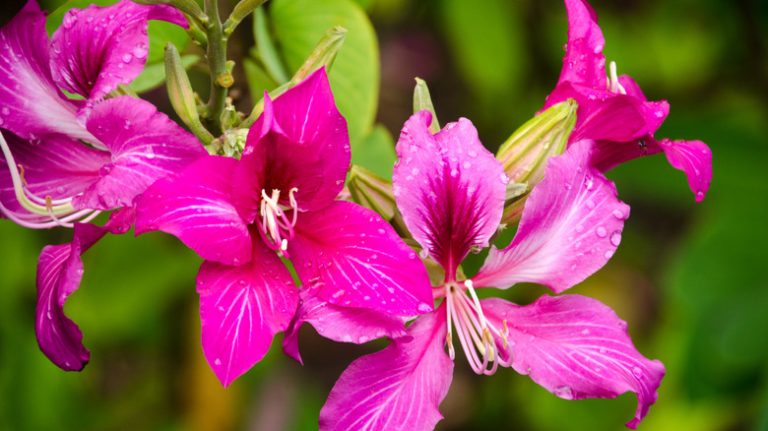The Swan River Daisy, also known by its botanical name Brachyscome iberidifolia, is a stunning flowering plant that is native to the Swan River region in Western Australia. This vibrant and versatile plant attracts attention with its beautiful blue, purple, and white blooms.
This hardy annual or perennial plant is easy to grow, making it a popular choice for both novice and experienced gardeners. However, like any plant, it has specific requirements to thrive.
One of the advantages of the Swan River Daisy is that it can adapt to a variety of conditions. It prefers full sun and well-drained soils, but it can tolerate different soil types and a wide range of humidity levels. Whether you live in a hot and dry climate or receive frequent rain, this plant is sure to thrive.
If you want to learn how to grow the Swan River Daisy, there are several options available. You can start by sowing seeds directly into the ground or planting seedlings bought from a nursery. Another option is to propagate the plant from cuttings, which is especially useful if you already have a mature flowering plant.
When sowing seeds, make sure to do it in early spring or late summer. If you decide to go with seedlings, plant them in containers or directly in your garden. These plants tend to multiply and fill their surroundings, so make sure to leave enough space between them.
The Swan River Daisy is a low-maintenance plant, but regular pruning can help maintain its neat appearance. Remove any spent blooms or damaged foliage, and trim any long growth to keep it looking tidy.
So, if you’re looking to add a splash of color to your garden, the Swan River Daisy is an excellent choice. Its vibrant blooms, adaptability, and low maintenance make it a valuable addition to any garden or flower bed. Why not give it a try?
How to Plant and Grow Swan River Daisy
The Swan River Daisy is a beautiful flowering plant that can add a touch of color and elegance to any garden or landscape. If you’re interested in growing these stunning flowers in your own garden, follow these steps to ensure a successful growing season.
- Start with the seed: Begin by purchasing high-quality Swan River Daisy seeds from a reputable nursery or online source. Ensure that the seeds are fresh and healthy-looking.
- Prepare the soil: Swan River Daisies thrive in well-drained soil, so make sure to choose a location with good drainage. Prepare the soil by removing any weeds, rocks, or other debris and loosen it to allow for optimal root growth.
- Planting: Sow the seeds directly into the soil, spacing them about 6 inches apart. Gently cover the seeds with a thin layer of soil and water lightly.
- Watering: Swan River Daisies do not tolerate excessive watering, so be sure to water them sparingly. Allow the soil to dry out slightly between waterings to prevent root rot.
- Sunlight: These daisies love full sunlight, so make sure to plant them in a location that receives at least 6 hours of direct sunlight per day.
- Fertilizing: While Swan River Daisies are relatively low-maintenance, a light application of a balanced fertilizer can help promote healthy growth and abundant blooming. Be sure to follow the manufacturer’s instructions for the recommended application rates.
- Caring for your Swan River Daisies: Deadhead wilted or spent flowers regularly to encourage new blooms. This will also help maintain a neat appearance. Additionally, the removal of dead foliage helps prevent diseases and pests from taking hold.
- Overwintering: Swan River Daisies can be grown as perennials or annuals, depending on your climate. In colder areas, they may not survive the winter, so consider protecting them by mulching or moving them indoors.
- Common problems: While Swan River Daisies are generally disease and pest-resistant, they can occasionally suffer from issues such as powdery mildew or aphid infestations. Monitor your plants closely and take appropriate action if necessary.
- Enjoy the blooms: With proper care and maintenance, your Swan River Daisies will reward you with a continuous display of beautiful blue flowers throughout the growing season. These flowers attract butterflies, including the stunning Swallowtail, adding even more splendor to your garden.
Swan River Daisies are native to Australia but have become popular internationally due to their beauty and adaptability. Whether you’re planting them along a riverfront or filling containers on your patio, these daisies are sure to bring a touch of ‘blue star’ charm to your garden. So, grab some seeds and get started on creating your own Swan River Daisy haven!
Swan River Daisy Overview
The Swan River Daisy, scientifically known as Brachycome iberidifolia, is a small, delicate flowering plant that originates from Western Australia. It is a member of the Asteraceae family and is popular for its bright and colorful blooms. The petals of the Swan River Daisy range in color from blue to pink, with some varieties having white or purple blooms.
This daisy is relatively easy to grow and adapts well to various conditions. It thrives in sunny locations and well-drained soils. Although it is often grown outdoors, the Swan River Daisy can also be cultivated indoors as a potted plant. It is commonly used to spruce up the home or garden with its vibrant, long-lasting flowers.
Propagation of the Swan River Daisy can be done through seed or cuttings. When growing from seed, it is best to start indoors before the last frost. The seeds should be lightly pressed into the soil and kept moist until they germinate. Once the seedlings have rooted, they can be transplanted into containers or directly into the garden.
In terms of maintaining the Swan River Daisy, it is important to provide regular waterings. However, overwatering should be avoided, as this can lead to fungal problems. Fertilizing with a balanced fertilizer encourages healthy growth and blooming. In colder climates, the plants can be overwintered indoors or treated as annuals. Proper care and maintenance ensures that the Swan River Daisy continues to thrive and produce beautiful flowers throughout the growing season.
Overall, the Swan River Daisy is a lovely addition to any garden or home. Its sweet and delicate blooms can brighten up any space, whether it’s planted outdoors or brought indoors as a potted plant. With proper care and attention, this daisy will continue to flourish and multiply, providing a stunning display of color year after year.
| Key Points |
|---|
| The Swan River Daisy is a small flowering plant originating from Western Australia |
| It can be grown both outdoors and indoors, adding color to gardens and homes |
| Propagation can be done through seed or cuttings |
| Regular waterings and balanced fertilizer are important for maintaining the plants |
| The Swan River Daisy can be overwintered indoors or treated as an annual in colder climates |
Where to Plant Swan River Daisy
The Swan River Daisy, also known as “Brachycome iberidifolia”, is an Australian native plant that adds a cascade of colors to your garden. Whether you have a small balcony or a large backyard, these daisies can thrive and bring vibrant splendor to your outdoor space.
When it comes to planting the Swan River Daisy, there are several factors to consider to ensure its healthy growth and blooming beauty. Here are some tips on where to plant these delightful flowers:
| Front of borders: | Planting Swan River Daisies at the front of your borders will showcase their vibrant colors and attractive appearance. Their low-growing habit makes them perfect for edging along flower beds, providing a pop of color against the green foliage. |
| In between the gaps: | If you have gaps between other plants in your garden, the Swan River Daisy can fill in those spaces beautifully. Planting them between taller plants or in areas that need a little spruce up will create a harmonious and visually appealing garden landscape. |
| Pots and containers: | For those without a garden, Swan River Daisies can be grown in pots or containers. Place them on your balcony or patio to enjoy their colorful blooms up close. Remember to choose well-draining containers and use quality potting soil for optimal growth. |
| Indoors: | If you prefer indoor gardening, you can also grow Swan River Daisies in containers placed near a sunny window. Ensure they receive enough sunlight and regularly water them to keep the soil moist. Indoor planting also allows you to enjoy these beautiful flowers year-round. |
The Swan River Daisy is a versatile plant that can adapt to various planting conditions. Whether you prefer the traditional blue or want to explore other colors like pink or white, these daisies are sure to brighten up your home or garden. Their low maintenance nature makes them suitable for both beginner and experienced gardeners.
By following the proper planting and maintenance techniques, you can guarantee the long-lasting beauty of Swan River Daisies. Regular watering, especially during hot and dry periods, encourages healthy growth and continuous blooming. However, be cautious not to overwater, as this can lead to fungal problems and root rot.
In terms of pests, Swan River Daisies are generally resistant to common garden pests and diseases. However, it is always a good practice to keep an eye out for any signs of infestation or fungal issues. If you notice any problems, promptly take action to protect the health of your plants.
To propagate Swan River Daisies, you can collect their seeds after the flowers have finished blooming. Start the seeds indoors or sow them directly into the soil. They are fast-growing and will soon become a beautiful addition to your garden.
So, whether you are a seasoned gardener or just starting, the Swan River Daisy is a wonderful choice to bring colors and satisfaction to your home or garden. Enjoy the delightful blooms and the zephyr-like appearance of these Australian beauties.




